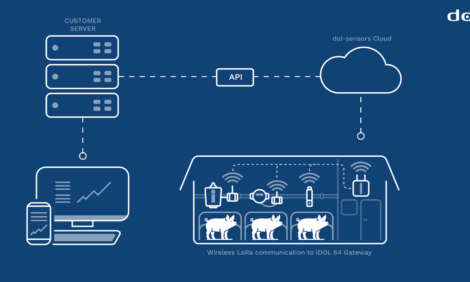



World Pork Expo: The pitfall of least-cost diets – why cheap doesn’t mean profitable
Experts explain how focusing solely on feed ingredient prices can undercut performance and profitability, especially leading into high summer pricesDr. Bart Borg, vice president of Feed and Nutrition at Passel Farms, and Dr. David Rosero, assistant professor at Iowa State University, spoke to The Pig Site’s Sarah Mikesell at the Lessons in Swine Nutrition seminar titled The True Cost of Least-cost Formulation hosted by US Soy at World Pork Expo in Des Moines, Iowa, USA.
Dr. Borg, when it comes to diet formulation, can you describe and compare least-cost formulation versus a more holistic formulation approach?
The least-cost formulation is a linear program that’s sole purpose is to find the least cost of the constraints that you put on the diet. Uncontrolled, it will give you an answer that doesn't really make nutritional sense but will be really, really low in cost.
A more holistic formulation approach means you have a plan. You're limiting and restricting ingredients and putting nutrient minimums on it, and you really understand what you're formulating for in the way of performance.
How can financial modeling assist with formulation decision-making?
It's extremely important to consider the profitability of pork production. We formulate diets that create a cost for us by feeding the pig; however, we need to have, on the backside of that, the revenue calculation if we're doing things in formulation to cause an improved gain or a change in feed conversion.
That financial calculation must happen outside of formulation to understand whether it's the right thing to do or not. It’s an especially important step outside of formulation.
Are these decisions consistent across operations or what influencing factors play a role?
A lot of it is consistent across operations, but I would say an example where there could be some inconsistency is a system that may use the term of “space short” as compared to “space long.” The decision then could be that we won't formulate diets that may create differences in gain, but we'll leave them in the barn for two or three more days – that's one difference.
There are different metrics within different companies depending on the focus area. I've worked for several years for a company that was completely focused on cost per hundredweight. That doesn't have the revenue calculation on the backside of it, and there's good business reasons why it was done. Again, that's just another variable that might be considered.
Dr. Rosero, when we look specifically at mitigating the summer carcass dip, what are the economics and formulation considerations producers and nutritionists should be considering?
At today’s seminar, we discussed the summer carcass weight dip, which happens year after year, but more importantly, different nutritional strategies to mitigate it.
What we learned is that the use of soybean meal to a certain level will maximize carcass weight gain. This is something you want to capture during summer because prices will typically be higher during the summer months because of peak grilling demand.
Then, thinking about what we just discussed today on least-cost formulation, this is really happening in two different scenarios. One is the diet that is looking for the lowest cost, but at the same time, a diet that maximizes the growth of pigs because that way I'm capturing maximum (profit) potential. It’s something we have learned regarding soybean meal.
Also to add from the discussion earlier today, some feed ingredients might limit feed intake in my pigs, and it’s best to avoid these ingredients during the summer.
Are there economic tools that can help producers and nutritionists through this process?
Unfortunately, there are no tools available, but typically a company will have small models that can tie growth performance, with the expected price for pigs to the diet formulation.
It’s been our dream to develop this (tool) along with Dr. Borg. We (Iowa State University) are working together on an exciting tool that will take the three parts and integrate them together which will get us to profitability.
Diet cost + expected performance + future price = profitability
The answer to your questions is, unfortunately, as nutritionists, we don't have a common tool for everyone today. But the excitement is that we are working on a tool that can integrate all three factors.
It sounds like it will be coming soon?
We're working as we speak, and our goal is to get the tool created before the time we must plan for the next summer diets. It should be available around wintertime because the decision must be made by January, as producers will have to start feeding pigs in February if they expect a higher gain during the May-to-June time period.
Dr. Borg, what are the key takeaways from both a producer and nutritionist perspective from this true cost presentation?
I think for both the producer and nutritionist it's especially important that you don't just look at diet cost.
- From a nutritionist standpoint, control of the least-cost formulation program with knowledge of what ingredients do to performance has to be used.
- From a producer's standpoint, don't be naive and choose the lowest cost assuming that means maximum profit.
Dr. Rosero, what's your key takeaway?
Like Dr. Borg suggested, think about your nutritional program beyond the diet costs. If I only focus on diet costs, I might be shirking performance, which is going to hurt profitability by not capturing the revenue from the gain of pigs. Summer carcass weight dip is a good example because we have an opportunity to capture this year anywhere from $3 to $4 per pig if I apply the right strategy.
For more information, please click here.
© 2025 United Soybean Board
U.S. Soy is a federally registered trademark of the United Soybean Board and may not be used by third parties without explicit permission. Brought to you by U.S. Soy. Fully funded by the Soy Checkoff.







